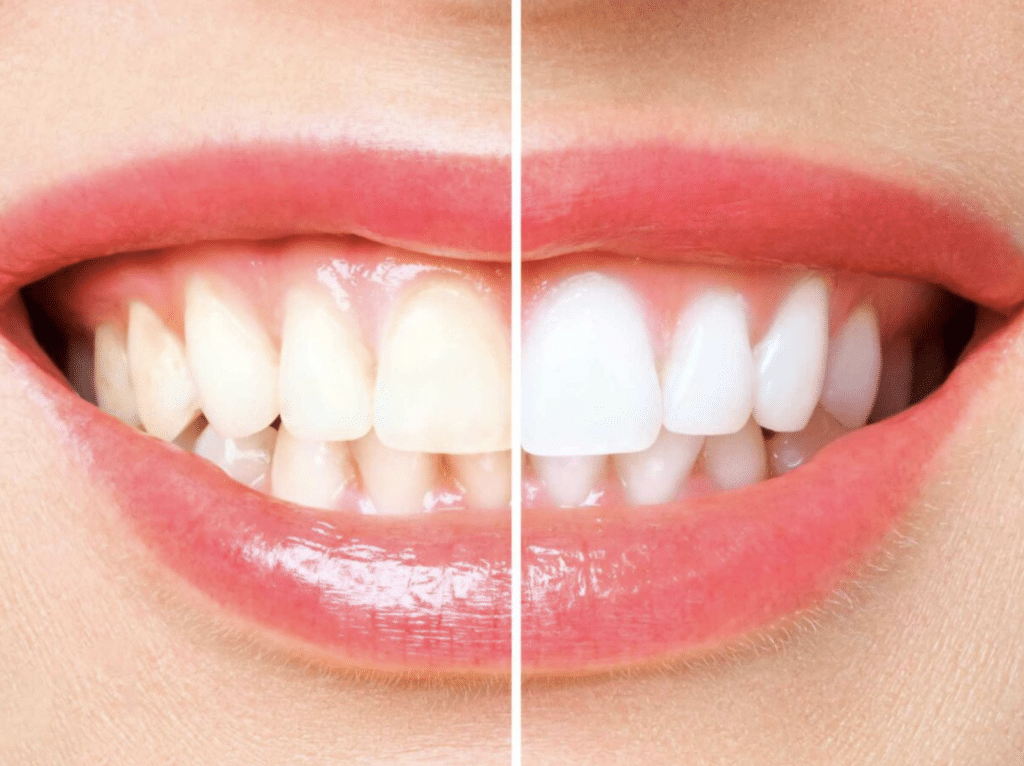Teeth whitening stands as a highly sought-after cosmetic dental procedure, celebrated for its potential to revitalize one’s smile and elevate self-esteem. However, embarking on the journey of teeth whitening can be daunting due to the plethora of products and methods that claim to offer miraculous outcomes.
This comprehensive article aims to navigate the intricacies of teeth whitening, demystifying prevalent myths and illuminating effective strategies that promise a luminous smile.
Professional Dental Treatments
Professional Teeth Whitening
Professional teeth whitening is renowned for its efficacy, but like any medical procedure, it encompasses both benefits and limitations. Let’s explore the facets of this approach:
Pros:
- Immediate and Remarkable Results: Dentists employ powerful whitening agents that yield significant improvements within just a session or two.
- Tailored Care: The procedure can be customized to meet individual requirements, addressing any specific dental concerns.
- Expert Oversight: Professional supervision ensures the safety of the patient, mitigating potential adverse effects.
Cons:
- Cost: Opting for professional whitening incurs a higher expense compared to DIY methods, with prices varying by location and technique.
- Sensitivity: Post-procedure sensitivity or gum irritation may occur, contingent on the whitening agent utilized.
Deciding on professional teeth whitening involves weighing its quick and customized results against the cost and potential sensitivity. It’s more than just chasing a brighter smile; it’s about making a thoughtful choice that fits your dental health goals and budget.
Discussing with your dentist can provide clarity, ensuring the decision aligns with your overall well-being. Ultimately, it’s about finding that sweet spot where efficacy meets your personal needs, leading to not just a brighter, but a confident and healthy smile.
At-Home Remedies
Whitening Toothpaste
Whitening toothpaste offers a straightforward and accessible means to brighten teeth, though it comes with its own set of pros and cons:
Pros:
- Ease of Use: Available in stores, whitening toothpaste can seamlessly integrate into one’s daily oral hygiene practice.
- Subtle Enhancement: Regular use can gently diminish surface stains, yielding a gradual improvement in tooth shade.
Cons:
- Modest Impact: For those with deep staining, whitening toothpaste might not deliver dramatic transformations.
- Potential Enamel Damage: Prolonged use of abrasive formulas could harm the tooth enamel.
Opting for whitening toothpaste is a convenient way to work on getting a brighter smile, balancing the easy integration into your daily routine against its mixed results and the potential for enamel wear. While it’s an attractive option for those looking for a subtle boost without major intervention, it’s crucial to choose wisely to avoid any long-term damage to your teeth.
Over-the-Counter Whitening Strips
Whitening strips are another popular method, offering convenience and affordability. However, they too have their advantages and disadvantages:
Pros:
- Wide Availability: These strips can be easily found in drugstores and are simple to apply.
- Cost-Effective: A more economical choice compared to professional treatments.
Cons:
- Milder Effect: Due to lower concentrations of whitening agents, results may be more gradual and less pronounced.
- Risk of Sensitivity: Usage might lead to tooth sensitivity for some individuals.
Understanding the Science of Teeth Whitening
To make informed decisions, comprehending the science behind teeth whitening is crucial. Teeth stains fall into two categories:
- Extrinsic Stains: These surface-level stains are typically caused by coffee, tea, wine, and smoking, and are generally responsive to whitening treatments.
- Intrinsic Stains: Embedded within the tooth, these stains may stem from genetics, medication, or trauma and are often harder to lighten.
Effective teeth whitening treatments leverage bleaching agents such as hydrogen peroxide or carbamide peroxide to brighten smiles by breaking down both surface and deeper-set stains.
These chemicals act on extrinsic stains—like those from coffee or smoking—by clearing them from the enamel’s surface. They also penetrate the teeth to lighten intrinsic stains caused by factors such as aging or certain medications. This comprehensive approach allows for significant whitening results, making these solutions a popular choice for those looking to enhance the appearance of their teeth and boost their smile confidence.
Caution Against Potentially Harmful Trends
In the pursuit of whiter teeth, it’s vital to steer clear of trends that might compromise dental health:
- Charcoal Teeth Whitening: Despite its popularity on social media, charcoal-based products lack substantial scientific backing and may erode enamel.
- Lemon Juice and Baking Soda: This DIY approach is overly harsh, with the acidity of lemon juice and abrasiveness of baking soda posing risks to tooth health.
- Purple Toothpaste: Innovations like the V34 Colour Corrector use color theory to neutralize yellow tones. However, the inclusion of certain synthetic dyes raises concerns about their safety for oral use.
- PAP Whitening Products: Products featuring Phthalimidoperoxycaproic Acid (PAP) as a gentler alternative to traditional bleaching agents require more research to validate their efficacy and safety.
When chasing that perfect white smile, it’s key to not get swept up by every new trend that pops up. Products like charcoal whiteners, those DIY mixes, and even the latest in high-tech toothpastes sound great but might not be the best for your teeth in the long run. It’s all about finding what’s safe and actually works, rather than just what looks cool or gets hyped up online. At the end of the day, a healthy smile is the best kind of bright.
Ensuring Safe and Effective Teeth Whitening
While the allure of a brighter smile is understandable, prioritizing oral health is paramount. In our practice, we endorse thoroughly researched and proven techniques, offering our patients safe and effective options for enhancing their dental aesthetics. Achieving a radiant smile through teeth whitening is indeed feasible, but selecting the appropriate method is key.
Always seek the advice of a dental professional before embarking on a whitening regimen and remain wary of fads that could endanger your dental well-being. Ultimately, the foundation of a beautiful smile is a healthy one.

